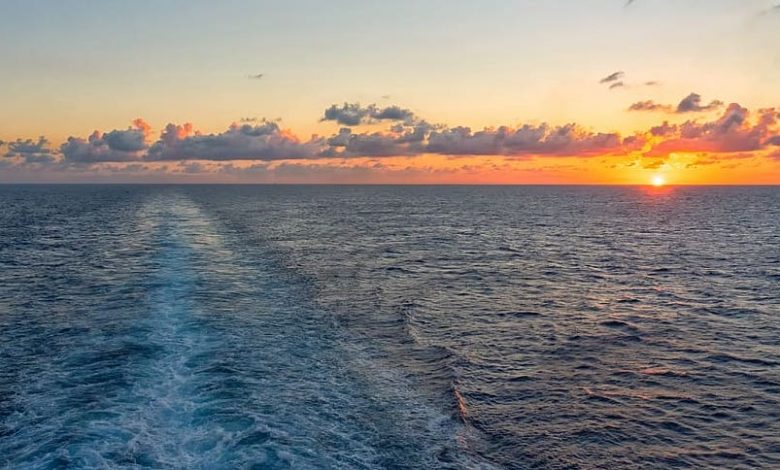Maritime CEO
IACS: Goals laid out

Genoa: In a wide-ranging interview with Maritime CEO the new chairman of the International Association Classification Societies (IACS), Roberto Cazzulo, discusses his goals, how best to measure energy efficiency, the fallout from the recent MOL Comfort disaster, ecoships, slowsteaming and whether the downturn is near an end.
Cazzulo, who became the head of IACS on July 1, is chairman of Italy’s RINA Services, a company he’s been with since 1981. He took over the IACS position from Lloyd’s Register’s Tom Boardley.
Key goals during Cazzulo’s tenure are fourfold: leadership, technical knowledge, quality and transparency.
“IACS should be more important in being a principal technical advisor to the IMO,” Cazzulo says, adding: “We have to improve IACS leadership so as to contribute to substantial discussion and better feedback.”
On technical knowledge the RINA boss notes that collectively IACS classes 95% of world tonnage – around 1bn gross tonnes.
“In this work we have a lot of benefits to collectively discuss issues together,” he says. Cazzulo wants to put collectively IACS’s knowledge to the disposal of the industry.
A specific focus right now is looking at containerships. “We must look at containerships, especially following the MOL Comfort,” Cazzulo says referring to the recently split-in-two Japanese boxship. In June IACSestablished a group on containerships with a particular focus on post-panamax containerships to present to the IMO. Cazzulo says the group is looking at every aspect of containership operations from loading conditions, design, materials used in construction as well as operational issues.
Also in the knowledge drive is Cazzulo’s aim to finalise the IACS harmonised common structural rules (CSR) for new bulk carriers and oil tankers and to promote energy efficiency and green technologies. At any one time IACS has around 1,000 projects going on. The plan is to adopt harmonized CSR in November this year, so that they will enter into force into 2015 and 2016. CSR have been 10 years in the making. 2016 is also the date of entry for IMO’s goal based standards.
On quality Cazzulo is looking to further enhance and reinforce IACS’s quality system certification scheme.
When it comes to transparency Cazzulo has plenty to say. “The industry has to rely on information that is transparent, that is visible, that can be verified, that can be assessed and used,” he says. “Our aim is to work with the IMO and other administrations to create a more open exchange of information.”
A topical debate at the moment is on energy efficiency mechanisms, especially for existing tonnage and Cazzulo has his own opinions on the matter.
For newbuilds Cazzulo favours IMO’s Energy Efficiency Design Index (EEDI), sying: “IACS has worked to make EEDI an important tool.”
For existing ships, however, Cazzulo admits, “The situation is much more complex.”
The IACS boss believes that indexes such as RightShip’s do not cover all bases. IACS is in discussions with shipping associations around the world to identify what type of indexing might be used for existing ships.
“The preliminary decision says best way is to go through IMO’s Ship Energy Efficiency Management Plan (SEEMP) process,” says Cazzulo. “We should elaborate something on the SEEMP IMO approach, with more details for different ship types.” The matter will be discussed at the tripartite meeting between yards, owners and class in Tokyo this October.
Turning to ecoships, Cazzulo is adamant they are not shipyard marketing hype but are here to stay.
“Running costs are a key driver for this industry,” the class executive reckons. “Ecoships represent a matter that could determine whether ships are busy in years to come. Ecoships represent a differential, a competitive advantage. Ecoships are one of the most important areas for innovation today. Economic factors are driving it.”
Nevertheless, he does caution, “Ecoships are not a magic wand. It is important to get a balance between technical solutions and operational aspects.”
On another hop topic, slow steaming, Cazzulo warns that reduced power may cause trouble when steering in adverse conditions. IACS is making a report on the minimum power to use in adverse conditions.
“Slow steaming was the first solution taken by some sectors, especially in containers,” notes Cazzulo, but I don't feel that slow steaming by itself is a long term solution.”
Looking at the markets the shipping veteran has seen enough cycles to see the tell tale signs of recovery, namely key shipowners or companies from certain countries returning to the yards with orders.
“We are seeing that now with some very reputable shipowners investing in new ships,” he says. “The downturn is perhaps going to finish.”
With that our interview time has stretched well beyond its allotted time and Cazzulo is busier than ever. “I’ll be travelling a lot this year,” he says, “the chairman’s role is to keep close relationships with associations around the world.” An airplane awaits. [18/07/13]
